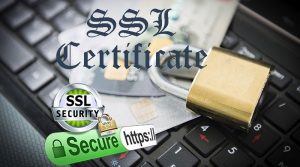Steps to Install SSL On IIS 10
Once you receive the issued certificate from the certificate authority, and obtain the cer file follow the steps:
- Start Internet Information Services (IIS) Manager
- Double-click on Server Certificates icon on the Home page.
- Hover the mouse to the Actions panel on the right side of the window and click “Complete Certificate Request…” button.
- Specify Certificate Authority Response contains 3 fields for modifying
- File name containing the certification authority’s response – browse through the file system to the certificate file which you have received from the certificate authority. Usually, its name looks like in this example: mydomainname_com.cer
- Friendly name – this field helps the server administrator to easily locate a particular certificate. As an example, a domain name of the certificate can be specified in this field.
- Select a certificate store for the new certificate – choose Personal from the drop-down menu.
- When all fields are completed, click OK to import the certificate to the server storage.
- If installation is successful, a new entry will appear on the Server Certificates page.
- The installed certificate must now be assigned to a website by binding to a secure port. To do this, expand the Sites subsection in Connections panel on the left side of IIS Manager and select the corresponding site. Then hover the mouse back to Actions panel and select Bindings
- Click Add… on the right side of Site Bindings window.
- Several fields on the next pop-up window need to be modified::
- Type – select “https” from the drop-down menu.
- IP address – choose the IP address or “All Unassigned”.
- Port – specify the port number for a secure connection. The default port number is 443.
- SSL certificate – select the corresponding certificate by the previously specified Friendly name.
- When the fields are set up, click OK button.
- The new entry should appear in Site Bindings window..
- Now the website should be accessible via secure HTTPS connection.


